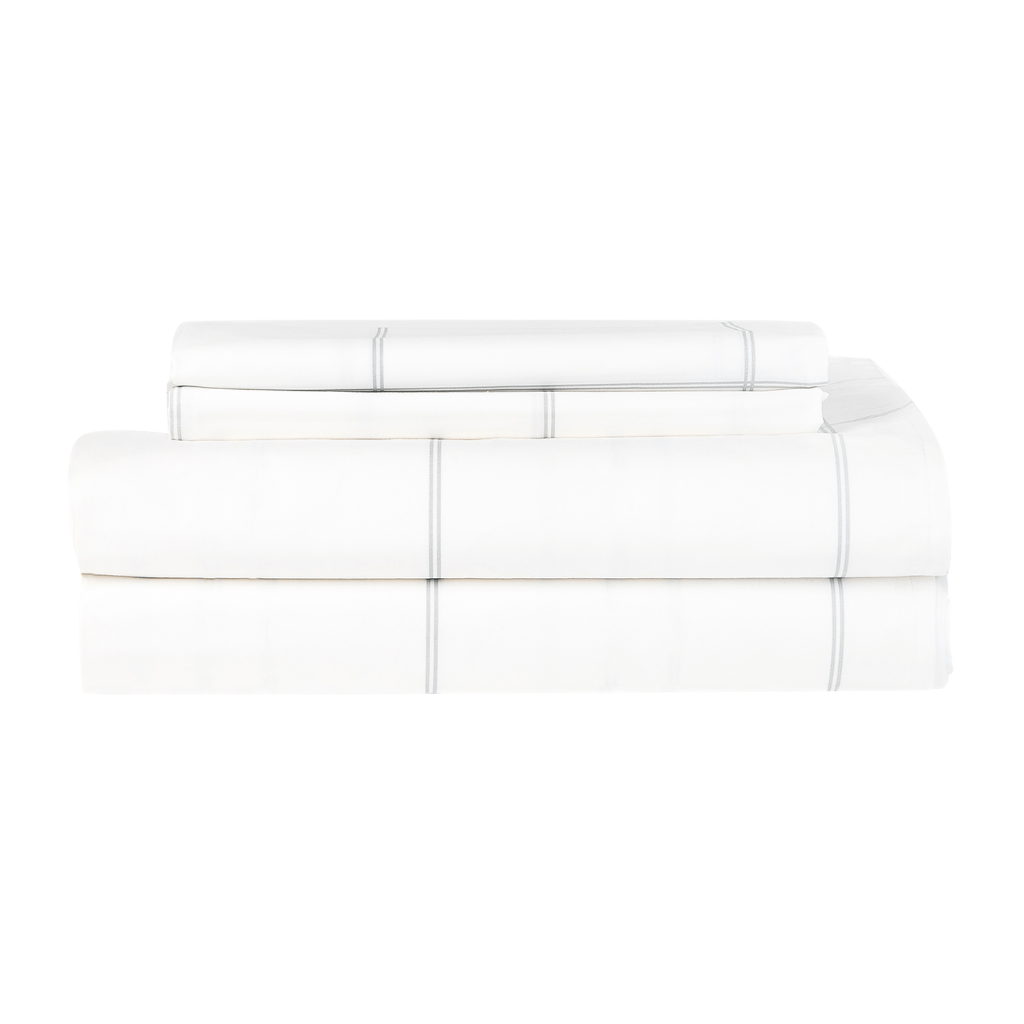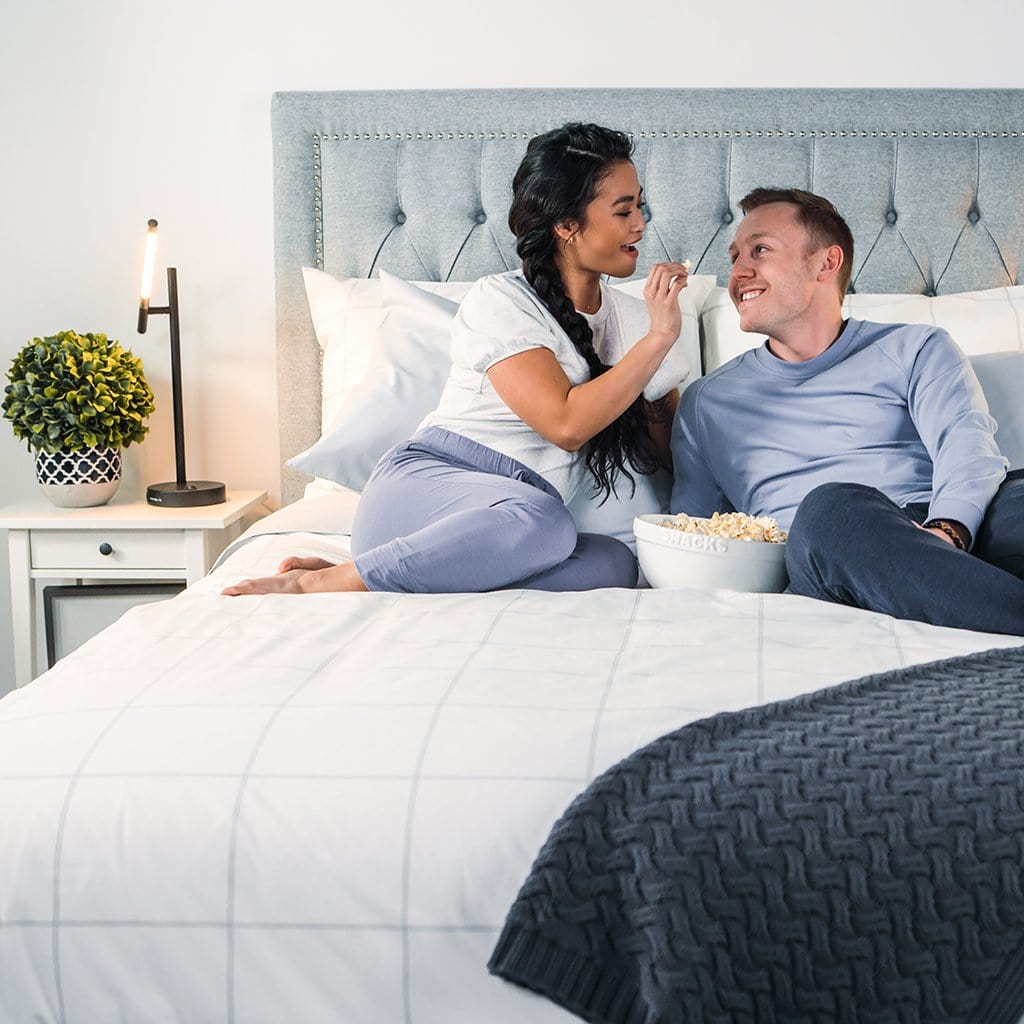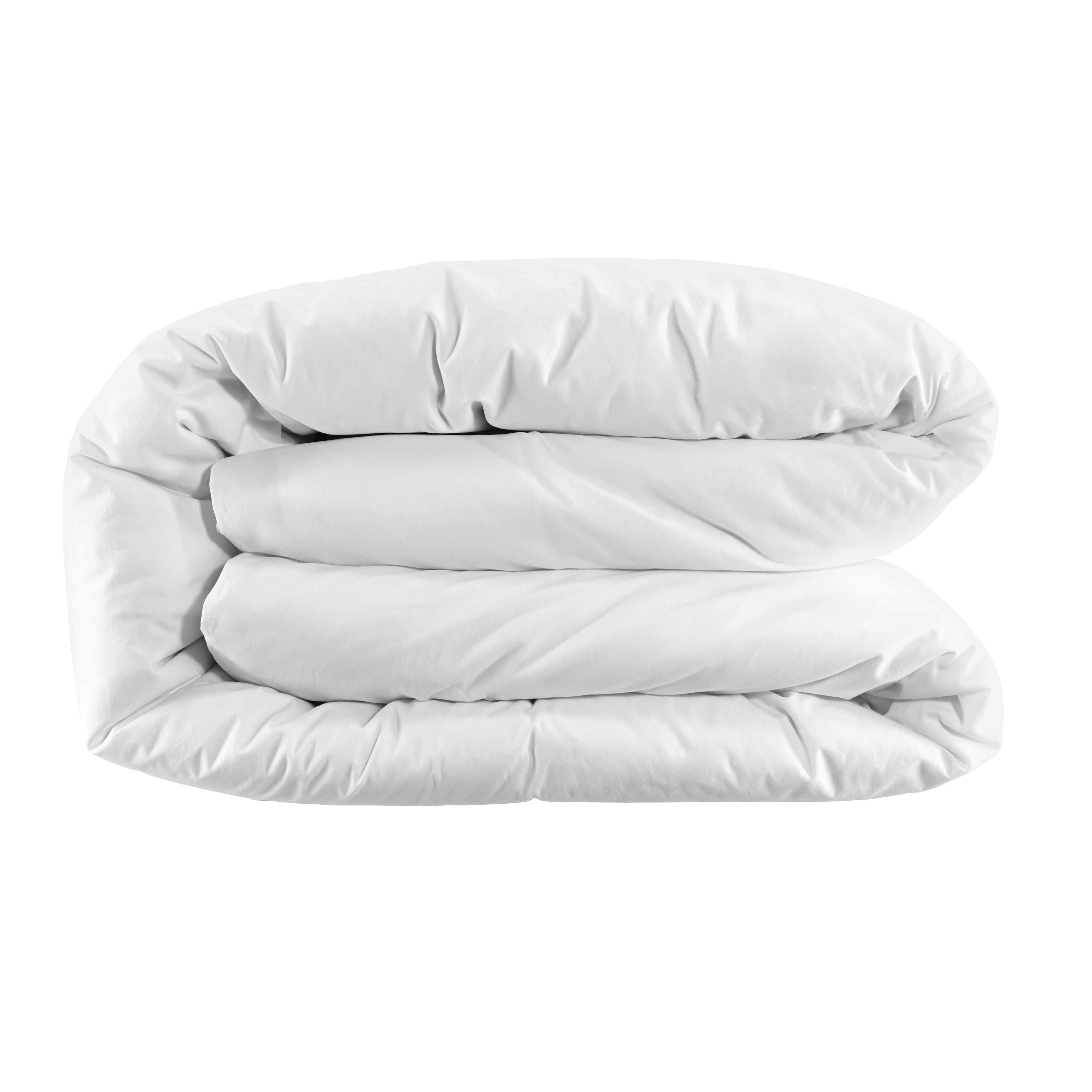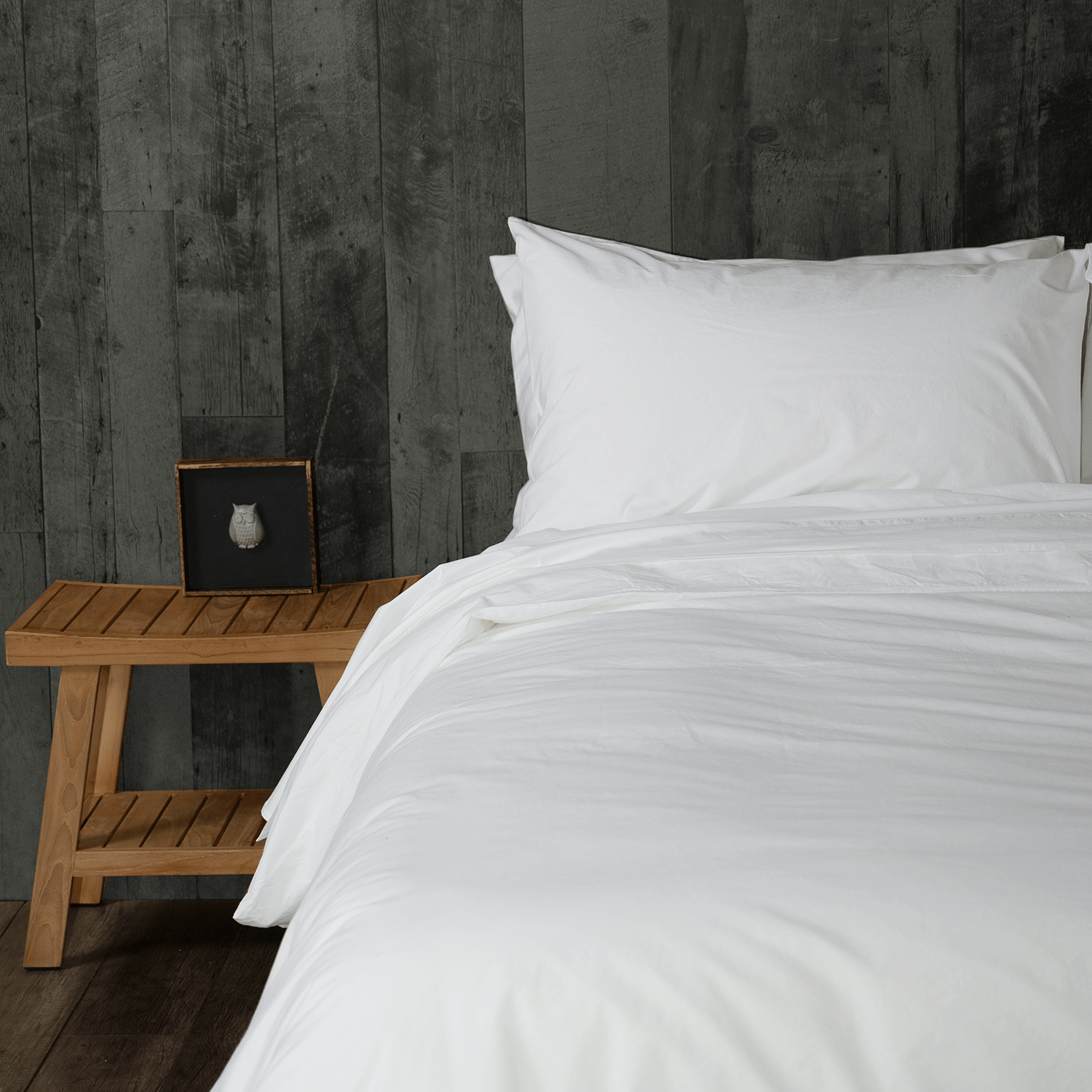When you spend as much as a third of your life in bed, the comfort of your bed and bedding takes on a whole new level of importance. Having the perfect sheet set suddenly seems like a life-changing decision!
There are as many different types of sheets as there are mattresses and sleepers. Figuring out what is perfect for you starts with understanding two of the more common types of fabrics and determining what works best for you.
Let us dive under the covers to look at percale vs sateen sheets to see which will give you a bed worth dreaming in.
It’s All About That Weave
First, it is important to know that percale and sateen refer to the weave of the fabric and not to the fibre it is made of. This means you should pay close attention when you are buying sheets to ensure you know what kind of fibre you are getting since percale and sateen can be made of polyester or rayon as well as cotton.

The different materials and fibres used can affect the feel, performance, and durability of your sheets. You can expect percale and sateen weave to have some consistent traits no matter the fibre, but the fibre type does play a role. This is why we make our sheets and bedding out of 100% Egyptian cotton and woven in both Israel and Portugal.
Sateen uses a three-over-one-under weave that provides that subtle shine and exceptional drape. The thread or yarn used is usually thicker and woven more tightly, giving it a higher thread count. The weave pattern of sateen mimics that of satin for a lustrous look, heavier weight, and warmer fabric.
Perks of Percale
With a percale weave, you get a practical sheet with a matte finish that is crisp. They are frequently compared to your favourite button-down shirt. This weave type provides a lighter-weight fabric that is more breathable, making percale sheets good for warmer climates.

The strong weave of percale is naturally resistant to pilling and durable over time. They make for sheets that you will look forward to putting on the bed when it is time to change the sheets.
Percale can feel a little stiff when it is new, but it gets softer after multiple washings. You might notice it a little more if the sheet has been coloured with a darker dye.
Because they regulate temperature well, percale makes for comfortable sleeping all year round, especially for anyone who runs hot when they sleep.
Percale sheets do come out of the dryer a bit on the wrinkly side, but you can iron them if you really want a crisp look to your sheets. Otherwise, plan to take them out as soon as they finish to minimize the wrinkles.
Pros:
- Durable
- Breathable, so good year-round
- Softens over time
- Easy to care for
Cons:
- Wrinkle
- Not as soft as other fabrics initially
- Can make noise when you move
Best if:
- You tend to get hot when you sleep
- You want a durable sheet set
- You like the idea of more softness over time
- You want to use the same sheets year-round
Satisfaction of Sateen
Sateen fabrics provide a luxurious look and feel to your bedding with their soft sheen. They are among the softest sheets you can choose to snuggle down into.

Sateen’s silky texture makes these sheets great for anyone with sensitive skin or who enjoys the direct feel of the sheets. The softer fabric does make them less durable than percale, though, as they can pill and lose their sheen. You can expect the sheen to fade a tiny bit with each wash.
While some people like to use sateen sheets year-round, they do retain heat better than other types. This might be cozy in winter, but if you are a hot sleeper, they might be too warm for your liking.
Sateen sheets are naturally wrinkle-resistant, so no need to ever think about ironing them. They are also machine washable and dryable, making them among the easiest types of sheets to care for.
Pros:
- Wrinkle-resistant
- Silky texture
- Slight lustrous sheen
- Excellent drape
Cons:
- Can snag and pill
- Sheen might fade
- Retain heat
Best if:
- You like sheets with some shine
- You tend to get chilly when you sleep
- You want a smooth look with little fuss
Percale vs Sateen: Which Will You Choose?
With this guide, you should be able to pick the best type of sheets for you — percale vs sateen. The fabrics serve the same function but with different qualities that impact how they look and feel. What appeals to some sleepers might be negative for others.
Whichever you choose, we know you’ll love our bedding collections that offer deep-fitted sheets, envelope-style closure pillowcases, and 100% Egyptian cotton certified free of harmful chemicals.








 US
US 
 CA
CA
Leave a comment